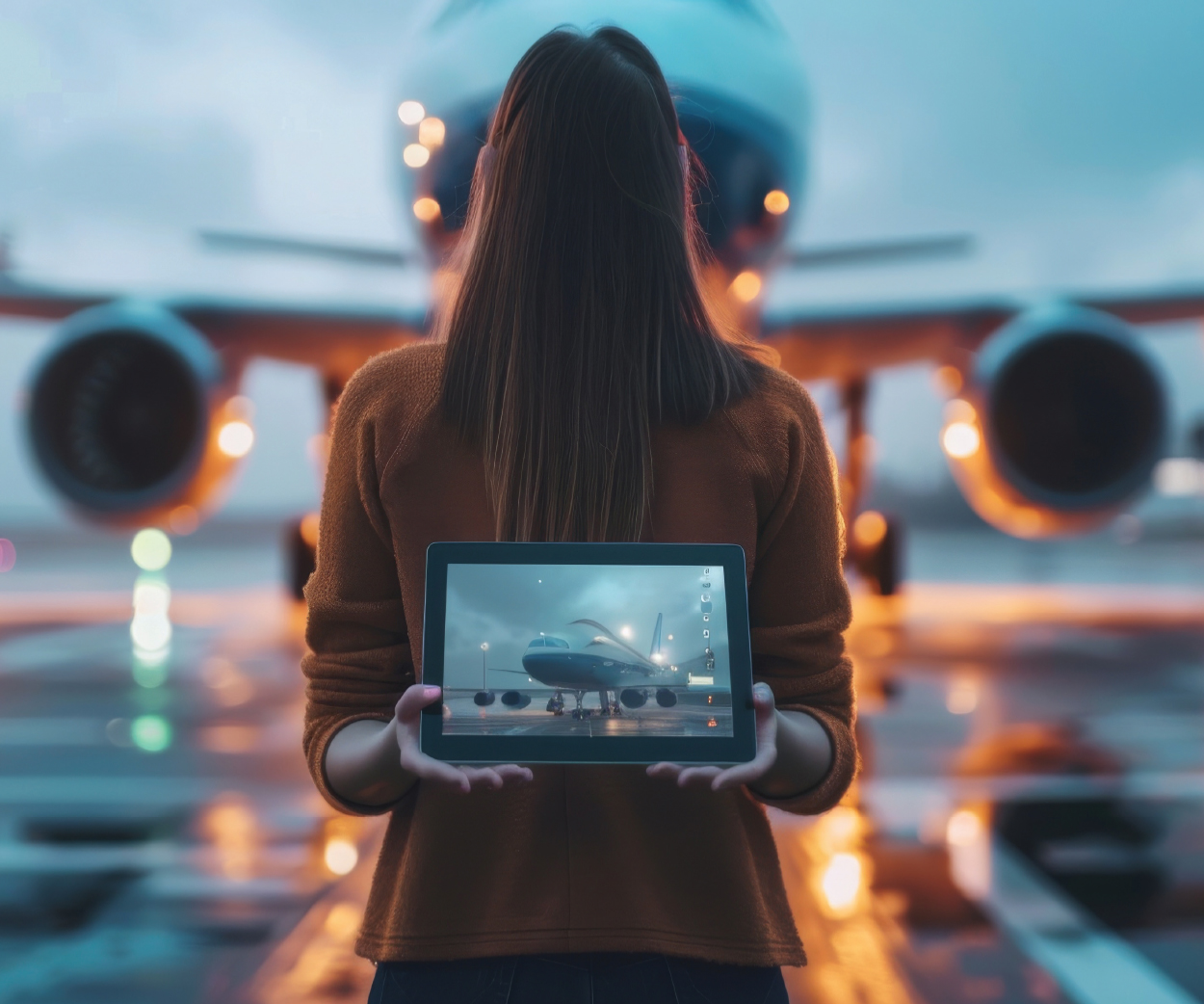If business travelers are waiting for airline service to get better anytime soon, don’t hold your breath. Despite protestations about post-pandemic workforce shortages, ATC and weather, airlines have always operated with their own schedules – not yours – in mind.
In fact, it’s time to change the discussion from recovering from airline disruptions to making the case for business aviation as both a time and money saving option. The fact is many corporate travel programs can no longer afford to live with the rising costs associated with convoluted airline services.
We’ve Been Here Before
All the headlines of disruptions, overcrowded flights, delays and cancellations this year, are identical to those published pre-pandemic. In February 2020, The Points Guy survey reported travelers found airline travel more stressful than paying taxes, going to work, the dentist or DMV.
Airlines are reporting near full recovery of small business traffic but corporate travel lagging behind. Meanwhile, Global Business Travel Association president Suzanne Neufang cites road warrior savvy in coping with airline service as a factor in predicting corporate travel won’t fully return to its $1.4 billion 2019 level until mid-2026.
“Business travelers are typically seasoned and adaptive travelers,” Neufang says. “Since they are frequently on the road and in the air, they also tend to stay very aware of what’s happening in travel and know the options as they navigate their trip. In July 2022, 85 percent said they definitely need to travel to accomplish their business goals and over three-fourths said they expect to travel for work more or much more in 2023 than they did in 2022.”
But it also begs the question whether looking solely at the numbers from scheduled carriers as a measure of corporate travel’s recovery isn’t overlooking a shift to business aviation, given the unprecedented global growth of private flying activity.
“Fixing airlines is not hard,” says retired Captain Michael Baiada, president of ATH Group, who has studied this issue for 40 years. “But it is extremely hard for airline CEOs to understand that it can be done quickly and inexpensively, especially given the antiquated and invalid assumptions now driving all airline decisions.”
Cost to Travelers & the Economy
With corporate travel managers at the forefront of recovery when things go wrong, what businesses need to know is how much it costs to provide recovery services to stranded passengers. That and the costs to passengers themselves makes the argument for private aviation.
As far back as 2013, the US Travel Association cited the impact of travel disruptions. It reported cancellations and delays were the top passenger concerns, costing travelers $8.5 billion in time lost, missed connections and missed travel activity each year. Another 2013 study, this one from PhocusWright/Amadeus, found the issues kept 20 percent of travelers from completing their trips. USTA reported that airline hassle factors drove passengers to avoid 41 million trips annually over the preceding 12 months. The losses to the airlines totaled $9 billion in revenues. But more importantly, it cost the nation’s economy $26.5 billion, according to the study.
The 2013 USTA survey was followed two weeks later by one published by the Stanford Transportation Group indicating business aviation grew from 16 percent of all premium business traveler trips to 41 percent.
Antiquated Operations
Today, business travelers flying commercial are returning to the same old, same old. Is it any wonder that business aviation continues to boom?
“Airlines blame their delays, and cancellations, on everyone else – ATC, government, airports, capacity, weather, labor, which are not roadblocks or even relevant in the discussion. The real problem is internal to each airline,” Baiada tells Business Travel Executive.
“For the last 30 to 40 years, airlines have consistently delivered 30 percent of their customers late,” Baiada maintains. “This was true in 1980, 1990, 2000, 2010, and still true in 2022. What we are doing is not working.”
This year’s “operational dismality,” as Baiada calls it, has prompted pleas to Congress to allow state attorneys general to enforce consumer protections laws. “More flights were cancelled in the first half of 2022 than in the entirety of 2021, a 42 percent increase over 2021,” stated the American Economic Liberties Project in its Congressional appeal. “Yet average domestic airfares are up 45 percent since 2019 and consumers are still waiting on $10 billion in unpaid refunds dating back more than two years.”
In response, the DOT has unveiled an information dashboard for quick reference on what services 10 US airlines offer in the event of cancellations or delays. The department has also issued a notice of proposed rulemaking on refunds and tightening the definitions of cancellations and delays. However those rules are not likely to take effect for at least two to three years.
The criticisms have prompted the industry group Airlines for America to cite the various problems outside the control of carriers, such as weather and air traffic control delays.
But Baiada argues that, “While it is true that airlines can’t control the weather, air traffic control staffing, National Air Space volume or even alligators on the runway, they can certainly mitigate the outcome. ATC capacity is not a problem. It is airlines’ failure to plan and take control of their operations. They could control their landing times and choose not to. And it’s not a schedule problem. This is a tactical landing time management problem. If you give ATC too many flights, that’s the airlines’ fault not ATC’s.”
How Do You Spell Relief?
Despite all the headlines, congressional investigations, and consumer complaints, if you spot a trend here, it is that scheduled airline service often isn’t – either on schedule or a real service. That means travel managers must provide their business travelers with air options that allow them to fulfill their missions for their companies.
To begin with, capacity cuts have resulted in sky-high fares, with travel management company CWT predicting fares paid by business travelers will rise nearly 50 percent this year and 8 percent next year. That fact is lowering the bar on the cost-benefit objections to flying private.
An additional concern is the loss of air service, according to WINGX managing director Richard Koe. Business travelers are still getting where they need to go thanks to business aviation, Koe says, noting that the loss of unique city pairs in scheduled service is similar to the rise of unique city pairs in private flying – and the number of such pairs continues to grow. Koe indicates another factor is the decline in frequency on city pairs which airlines do serve, resulting in an increase in frequency to those city pairs by private aviation.
“Travel managers are inquiring and asking questions,” said Private Jet Services senior vice president of sales Andrew VanderPloeg. “It follows the trends including the loss of air service, underserved markets and the unreliability of commercial airlines.”
Air Partner senior vice president of group charter US Simon Moore agrees. “Air Partner saw an increase in corporate flight requests from Feb. 1 to Aug. 30, 2022, compared with the same period in 2021,” he tells BTE. “This rise, coupled with the percentage of Air Partner’s total corporate business, indicates a significantly larger percentage of reservations from Air Partner’s corporate clients, and that those clients are returning or booking more frequently.”
Moore cites recent data from WingX Advance further highlighting the industry-wide trend in corporate travel. According to the analysis, there were more 1.911 million business jet departures across North America from Jan. 1 to Aug. 30, 2022, up 18 percent from 2021 and 19 percent from 2019. Similarly, there have been 2.491 million business jet departures globally in 2022, up 19 percent from 2021 and 20 percent from 2019.
“All this data points to the continued growth of business travel despite the ongoing challenges of high-traffic travel, last-minute cancellations and staff shortages,” Moore continues. “According to a recent survey, GBTA found in-person meetings ranked at the top of the list for where companies are allocating business travel spending this year, with customer and prospect meetings leading the fair majority of travel spending. Corporate travel managers are choosing to charter with Air Partner to meet their companies’ goals but also to ensure reliability, flexibility and solutions to growing challenges.”
Growing Pains
Consumers are voting with their feet with a two-year record demand for aircraft ownership and other private aviation options to solve their travel woes, guaranteeing them personal, effective help if something goes wrong. But unprecedented demand created its own problems, although first time buyers still put the ease of private aviation at the top of their list of why they continue to fly private.
“Our industry is experiencing difficulties as a result of demand,” VanderPloeg says. “We have had a number of clients migrate to ownership, because other options such as jet cards and charter have changed so much over the past two years.”
The billions of dollars that airline chaos costs travelers, businesses and the economy should be reason enough to rethink how business travels, especially given the fact that companies using business aviation outperform nonusers by 70 percent and their revenue growth beats their non-aviation user competitors 23 percent; according to the National Business Aviation Association.
These companies include all of the 100 most trustworthy companies in America and 98 percent of Fortune’s Top 50 most admired companies. But it’s not just for big corporations; NBAA data shows 62 percent of users have only a single airplane and 57 percent have fewer than 500 employees.
Considering the private aviation option means companies are no longer condemning travelers to return to the dawn of commercial aviation when the saying was: “If you have time to spare, go by air.” Clearly business aviation lives up to another old adage – “Time is money.”
Image: Photo: Joakim Honkasalo /Unsplash










